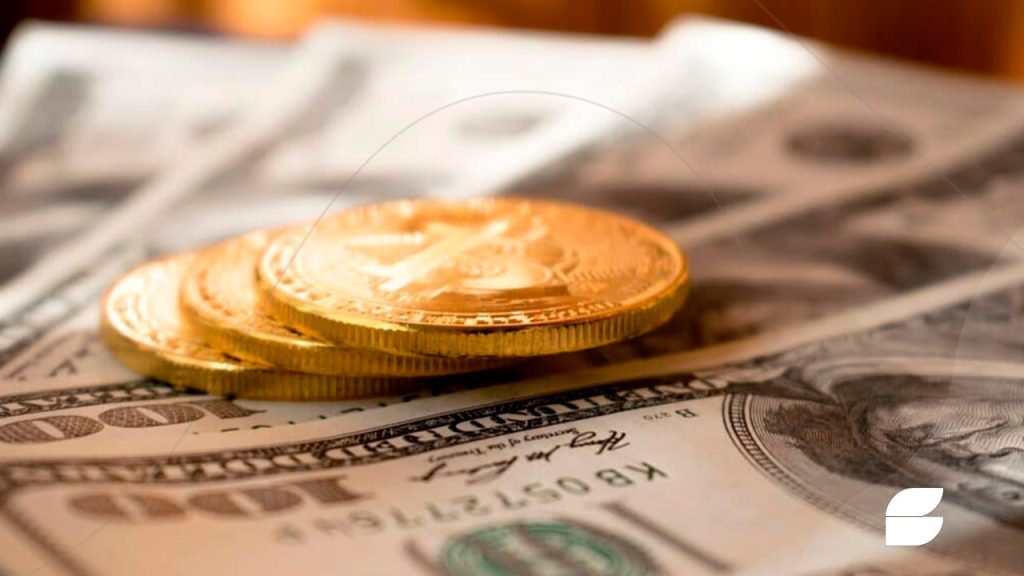Money, a important element in our daily transactions, has a fascinating past that stretches back to ancient civilizations.
As we delve into its history and explore its transformation, we will uncover the critical moments that shaped the concept of money into what it is today—a symbol of power, prosperity, and economic exchange.
A world without currency

Picture this: a long time ago, when ancient humans roamed the earth, their daily existence heavily reliant on their ability to acquire essential resources for survival.
In those early days, the barter system was the means of exchange. Imagine a nomadic tribe trading furs for grains, or salt for precious stones.
Although simple, this system had its limitations, as it required a double coincidence of wants between trading parties.
As human societies grew more complex and interactions expanded, the barter system’s shortcomings became evident. The need for a more efficient method of exchange gave rise to the birth of money as we know it.
From cowrie shells to gold coins
In our historical voyage, we met many objects and commodities that served as primitive forms of money. The ancient Chinese used cowrie shells, while the Aztecs prized cocoa beans for their economic transactions.
The inherent value and rarity of these objects imbued them with a purchasing power that transcended their original uses.
One of the most influential milestones in the evolution of money was the advent of metal coins. In ancient Lydia (modern-day Turkey), the Lydians began minting the first standardized coins around 600 BCE.
These coins, made from a mixture of gold and silver, revolutionized trade and laid the groundwork for the establishment of monetary systems in other civilizations.
An era of stability
As societies progressed and trade between regions expanded, the need for a universally accepted medium of exchange became crucial. Enter the Gold Standard—a system where a country’s currency was backed by a specific amount of gold held by the government.
This approach brought about unprecedented stability, as the value of money was intrinsically linked to the precious metal.
In the 19th century, major economies like Britain and the United States embraced the Gold Standard, solidifying its dominance on a global scale.
The system facilitated international trade and investment, providing a sense of security to investors and governments alike.
The rise of fiat money: Confidence in the state
While the Gold Standard brought stability, it also had limitations. The supply of money was tied to the availability of gold reserves, which could hamper economic growth during times of prosperity. As economies expanded, the rigid constraints of the Gold Standard became increasingly problematic.
The early 20th century witnessed a significant shift towards fiat money—currency that derives its value from the trust and confidence placed in the issuing government.
In 1971, the United States formally abandoned the Gold Standard under President Richard Nixon, marking a pivotal moment in the history of modern currencies.
The emergence of cryptocurrencies – The digital age
Fast forward to the digital age, and we find ourselves amidst a technological revolution that has given birth to cryptocurrencies. Led by the enigmatic figure of Satoshi Nakamoto, Bitcoin emerged in 2009 as the world’s first decentralized digital currency.
Operated on blockchain technology, cryptocurrencies offered a new paradigm of secure and transparent transactions, challenging traditional financial systems.
The rise of cryptocurrencies sparked intense debates about their legitimacy, regulation, and the potential to revolutionize global finance. Advocates hailed them as the future of money, while skeptics warned of speculative bubbles and illicit activities.
Money in the 21st century

As we step into the 21st century, the landscape of money continues to evolve at a rapid pace. Digital payment platforms, contactless cards, and mobile wallets have become the norm, transforming the way we conduct everyday transactions. The prevalence of online shopping, the gig economy, and peer-to-peer lending have further diversified the financial ecosystem.
Central banks worldwide are exploring the concept of central bank digital currencies (CBDCs), aiming to combine the efficiency of digital transactions with the stability of fiat money. These initiatives seek to address issues like financial inclusion, security, and the potential to bolster monetary policies.
Our journey through time has brought us face-to-face with the remarkable evolution of money—from primitive bartering to sophisticated digital currencies. Throughout history, money has been a symbol of power, a driver of human progress, and a catalyst for economic growth.
Like this article? Let us know in the comments and don’t forget to share!



 Revvi Visa: Tarjeta para Recuperar Crédito con Aceptación Global <p class='sec-title' style=' font-weight: normal; line-height: 1.9rem !important; font-size: 17px !important;'> Inclusión financiera para consumidores con crédito limitado, aceptación Visa, tarifas más altas y gestión digital </p>
Revvi Visa: Tarjeta para Recuperar Crédito con Aceptación Global <p class='sec-title' style=' font-weight: normal; line-height: 1.9rem !important; font-size: 17px !important;'> Inclusión financiera para consumidores con crédito limitado, aceptación Visa, tarifas más altas y gestión digital </p>  Credit Card Revvi Visa — Visión general, aceptación y características principales <p class='sec-title' style=' font-weight: normal; line-height: 1.9rem !important; font-size: 17px !important;'> Tarjeta accesible para la reconstrucción del crédito, amplia aceptación Visa, funcionalidades digitales y control financiero básico. </p>
Credit Card Revvi Visa — Visión general, aceptación y características principales <p class='sec-title' style=' font-weight: normal; line-height: 1.9rem !important; font-size: 17px !important;'> Tarjeta accesible para la reconstrucción del crédito, amplia aceptación Visa, funcionalidades digitales y control financiero básico. </p>  Discover Card: <p class='sec-title' style=' font-weight: normal; line-height: 1.9rem !important; font-size: 17px !important;'> Discover Card: </p>
Discover Card: <p class='sec-title' style=' font-weight: normal; line-height: 1.9rem !important; font-size: 17px !important;'> Discover Card: </p>